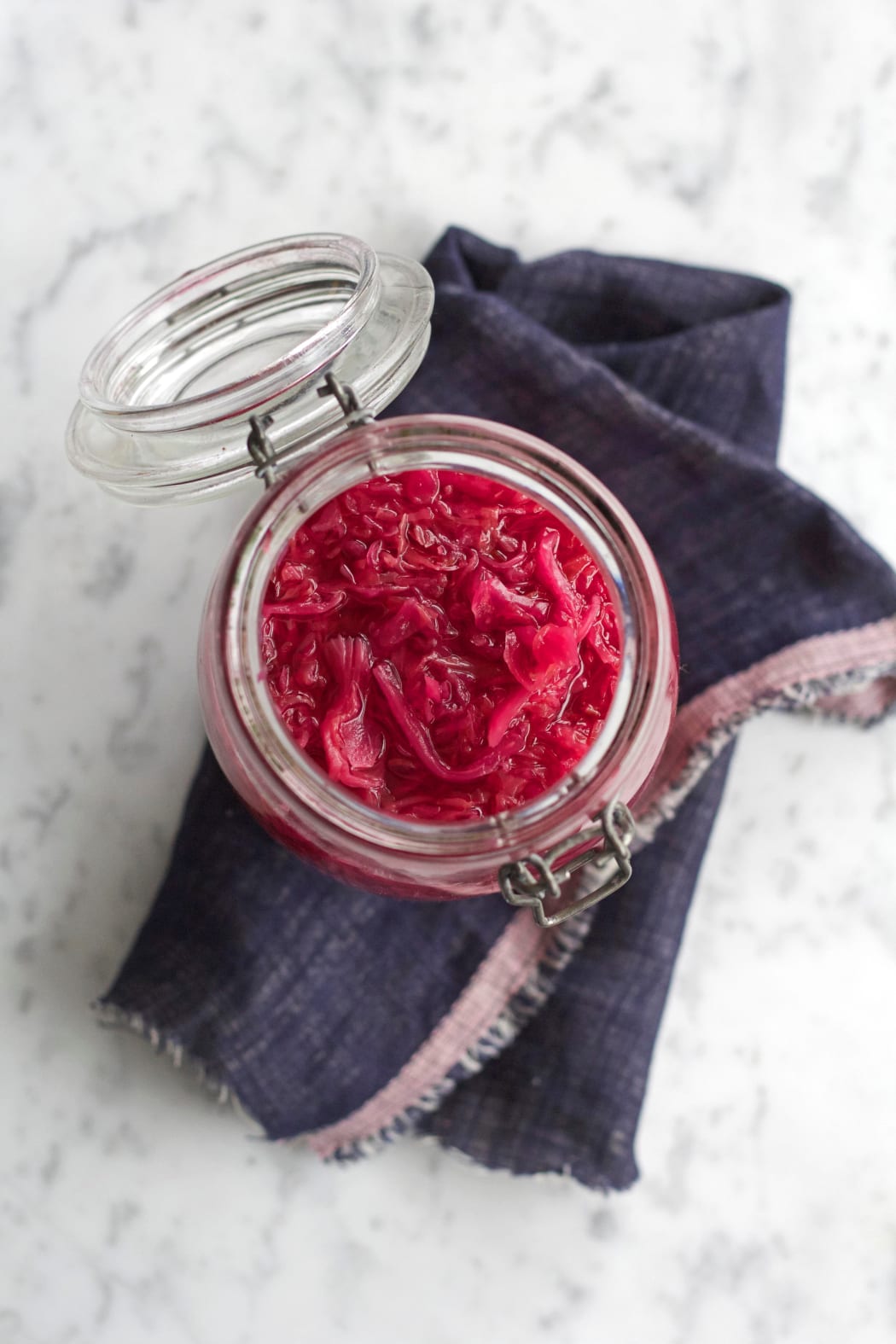Kelly Gibney's sauerkraut
Will make enough to fill 2-to-3 400ml jars

Saurkraut Photo: Supplied/Kelly Gibney
Don't be intimidated by this basic fermentation. It's very simple and I've been making it for years without ever experiencing a batch go bad or mouldy. As long as you keep the cabbage submerged in the liquid you'll have success.
I love to pair this with cheese, meat and avocado. Honestly, though, I'll find a way to incorporate it into most meals!
What you need
½ medium (450g) green cabbage - remove the outer leaves
½ medium (450g) red cabbage - remove the outer leaves
5 teaspoons non-iodised salt (iodine inhibits the necessary bacteria)
2-3 clean jars - wash beforehand with very hot soapy water and leave to air dry
Large bowl (or bucket) for mixing
Method
Cut the cabbage into quarters. Slice very thinly using a sharp knife or a mandolin. Place in the large bowl and sprinkle with salt - toss to disperse.
Using your (clean) hands, massage the cabbage vigorously for 5-10 minutes until it has softened, darkened and released lots of liquid. The longer you massage, the easier it is to pack into the jar.
Pack the softened cabbage and liquid VERY tightly into the jars leaving 3cm of space at the top (the cabbage will expand a little as the fermentation happens).
There should be enough liquid for the cabbage to be fully submerged when pushed down tightly.
Fermentation is an anaerobic activity (without oxygen) so it's important the cabbage comes in contact with as little air as possible and remains beneath the liquid to avoid contamination.
The massaging process should leave you with plenty of liquid
Place the jar lids on lightly and leave in a cool, dark place. A cupboard or pantry is ideal.
Check the sauerkraut every day during that first week. Use a clean fork to keep the cabbage pushed firmly under the liquid.
After a few days it should get bubbly. After a few more days it will start to smell and taste sour.
At the 10-day mark start tasting it. Once you are happy with the flavour place it in the fridge and enjoy.
** I typically ferment my sauerkraut for 14-20 days. The process will take longer in winter and will be faster in summer. The thickness of the cabbage slices also affects the length of time it takes to ferment.